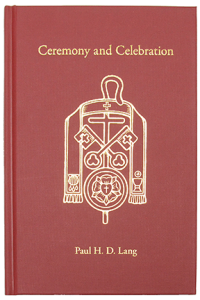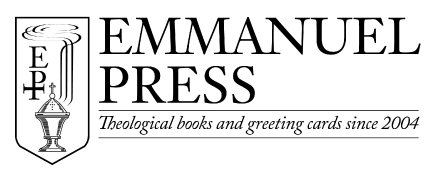 Why is it that some Christians kneel, bow, genuflect, make the sign of the cross on themselves, or hold their hands in a particular fashion during the Divine Service? These physical actions are called ceremonies, which are solemn religious actions that help to confess what we believe.
Why is it that some Christians kneel, bow, genuflect, make the sign of the cross on themselves, or hold their hands in a particular fashion during the Divine Service? These physical actions are called ceremonies, which are solemn religious actions that help to confess what we believe.
As Paul H.D. Lang writes in Ceremony and Celebration, “Communication is not limited to language. We express ourselves to others and we receive impressions from others and from God through signs and symbols. These communications by signs and symbols are often more effective than those of language. While this is true in ordinary life, it is particularly true in the church’s worship. The things communicated there have to do with the mysteries of our holy faith. These deep mysteries cannot, of course, be communicated so as to be understood fully or else they would no longer be mysteries. But signs and symbols often communicate the realities of the mysteries better than language.” (p. 64)
Here are a few brief excerpts on the particular actions, taken from Lang’s much more detailed explanations in his book:
- “For standing, sitting, and kneeling, the general rule is that we stand for prayer and praise, we sit for instruction and for lengthy chants and hymns, and we kneel for confession and adoration.” (p. 66)
- “Bowing and genuflecting are very closely related. A genuflection is merely a more profound bow….Bowing or kneeling when the words of the Nicene Creed are said, ‘And was incarnate by the Holy Ghost…and was made man,’ expresses reverent awe over God’s grace in becoming man in order to redeem us. Luther speaks at length about the meaning of these words and how we should show our appreciation and reverence for the Incarnation.” (p. 68-69)
- “Crossing oneself was practiced by Christians from the earliest centuries and may go back to apostolic times….It is one of the traditional ceremonies that was most definitely retained by Luther and the Lutheran Church in the 16th-century Reformation….The holy cross is the symbol of our salvation. We were signed with it when we were baptized. It is the sign by which the church blesses people and things. By using it we become part of the wonderful history of our faith and companions in the company of the saints. It is right that we should make the sign of the cross frequently and to glory in it, saying with St. Paul, ‘God forbid that I should glory save in the cross of our Lord Jesus Christ’ (Gal. 6:14)”. (p. 72-73)

